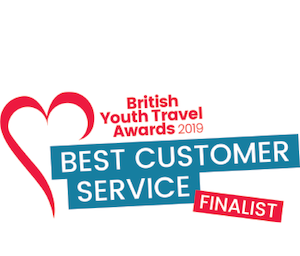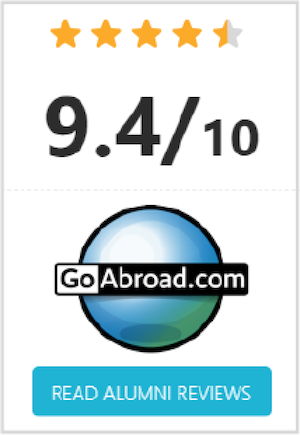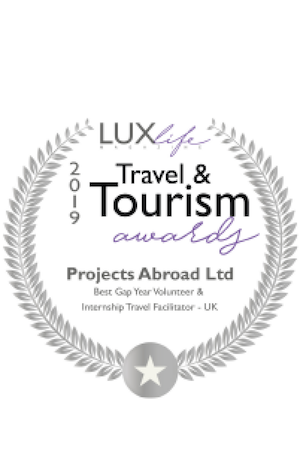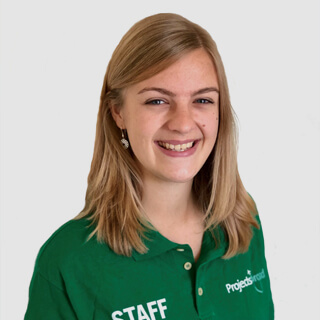As a prospective medical student, I was wholly interested in gaining more experience in the medical field. Moreover, I thought gaining experience in a different country would compound on the medical experience I was seeking. Projects Abroad seemed like the perfect fit in terms of being able to truly indulge in the medical field of a different country. Being convinced by my Filipino friend, I chose the Philippines to broaden my perspective and knowledge of medicine.
Arriving in the Philippines
As I exited Cebu International Airport, I was immediately hit by the Filipino humidity and heat. It was 2:00am when I arrived, yet I was still sweating, making me worry about how the day’s heat would greet me. I had no idea what to expect when I signed up for the program as a medical volunteer, in regards to both, what I would be doing and the Filipino culture. I was greeted by Aqui, a Projects Abroad staff member, at the airport who was surprisingly chipper for 2am. His smile and gregarious demeanor brought a sense of relief on my arrival. After a short nap at a pension that Projects Abroad provided on my arrival, I was off to Bogo City at 8am—the start of an enlightening and unforgettable experience.
The next couple days flew by as I was introduced to Projects Abroad and their mission, my duties as a medical volunteer, Bogo city, the hospital I would be working at for the next four weeks, and my host family. Before I knew it, my time in the Philippines was over and I was saying my goodbyes. During those four weeks, I had the privilege to partake and experience the healthcare system in Bogo City, meet incredible individuals from all around the world from all walks of life, travel to some of the most beautiful beaches, immerse myself in the Filipino culture, and have the freedom to execute community projects on my own will.
My Medicine project
First and foremost, I came to the Philippines to learn about the medical system and gain practical experience. My four weeks in the Severo Verallo Memorial District Hospital, I rotated in the ER, Lab and Delivery Room. As I progressed through my time in the hospital, I was able to shadow the doctors, nurses, and lab technicians. The great kindness and willingness that the staff provided to explain procedures was beyond insightful. Observing procedures that were as simple as IV insertions and skin tests, to more complex procedures such as tubal ligation surgeries and cyst removals were fascinating. A memorable experience was helping deliver babies, which was at first, shocking, but ended in a crescendo of happiness and awe. Shadowing all the hospital staff members was fantastic, but I believe seeing the difference in dynamics between American healthcare and Filipino healthcare was even more eye-opening.
My first week in the hospital, I was actually quite taken aback by the conditions and the limitations that the hospital was under. The hospital equipment was rudimentary compared to the equipment that most hospitals have in the States, the hospital’s sanitary conditions were dirtier than I had anticipated, and it was smaller than most hospitals I have been to. I was told by the nurses that although there were 50 beds in the hospital, they would take up to 150 patients, nicknaming the hall where the patients would spill into, the “hallward.” Yet, I understood these were the limitations and the hospital did its best to overcome them. I was impressed by the ingenuity and versatility of all the staff members, especially the nurses. Since there were only 1-2 physicians on staff per shift, the nurses would make up for that and were given a little more autonomy as a healthcare provider. This was a beautiful aspect of medicine I witnessed, seeing the hospital adapt to the patient population and its needs. Moreover, being taken in by the family-like feel of the hospital staff made my time even more feel-good.
My experience travelling
To be honest, one of my biggest worries when coming to the Philippines was the people I would meet and the opportunities I would get to meet them. But that worry evaporated with the social activities that Projects Abroad organizes, making it so much easier to meet people. Whether it was playing Charades at the local pizza parlor or watching traditional Filipino dances, it brought all the Projects Abroad volunteers together. Before I knew it, I had made a dozen friends from all over the world where we would, most every night, go to the infamous BBQ plaza to chill out after the day’s work. It was with this group of friends that we became like family and were inseparable. When the weekend came upon us, we were off to see what the Philippines had to offer.
The three weekends I had, I explored Cebu City, Camotes Island and Bantayan Island. Being able to step away from rural Bogo City (being more of a town than a city) to the bustling metropolis of Cebu City was a nice change of pace. It gave me a chance to see how the city ran compared to the little town of Bogo City. However, I believe exploring Camotes Island and Bantayan Island was the most memorable in terms of traveling. With a tough week in the hospital, exploring the islands was exactly what the doctor ordered. Seeing white sand accompanied with the clearest blue water I have ever seen was breath-taking. Exploring the island’s caves, snorkelling, and relaxing on the beach with friends is something I crave to do again.
Experiencing Filipino culture
During my stay, I was introduced to the Filipino culture through my daily interactions with people at the hospital, the food I ate at my host family’s house, and the social outings. While at the hospital, I was taught basic Cebuano, learning the history of the language’s similarity to English and Spanish. Moreover, during lunch at the hospital, I saw the importance of food and sharing of that food. Coming from a Korean background, I was more than familiar with this practice and was able to bond through this interaction. On the topic of food, I believe eating the local cuisine is one of the best ways to understand culture. My host family’s assortment of food that they laid out for me during breakfast and dinner, and the packed lunch they gave me was always a highlight of my day. The Filipino food such as lechon, fried rice, and sausages were scrumptious, always restraining myself to not stuff myself to the point of exploding. Finally, I saw the importance of religion in the Philippines—over 90% of the Filipino population is Christian. I saw how this integrated in their culture, from the hospital’s monthly worship to the prayer that was said when nurses switch shifts.
Finally, one of the most rewarding experiences during my stay in Bogo City was preparing a Sex Education talk with one of the local high schools with another volunteer, Sunny, who was a doctor from London. We had heard that teenage pregnancies were fairly common in Bogo City, leading us to find out there was no sexual education course offered at the high schools. This inspired us to present our knowledge and created a presentation to educate the local student population about basic reproductive anatomy, STIs, safe sex, the resources they have available, and answering questions they had. It was striking to see what they did not know; even saying they were unaware of what an STI was. By the end, the students had numerous questions answered and they seemed to have gained a lot. I was very appreciative of the Projects Abroad staff for supporting and helping us set up this great talk. It just underscored the true freedom we receive as volunteers to help the community.
I am truly thankful that I had the chance to be part of such a great program that is Projects Abroad. Beyond the medical knowledge I attained, I became more culturally competent, gained many friends, and made memories that will last a lifetime. I hope that my next experience volunteering abroad can match up to the time I had through Projects Abroad.

Are you interested in joining this project?
If so, one of our experts can help.
Contact Us on:
This is a personal account of one volunteer’s experience on the project and is a snapshot in time. Your experience may be different, as our projects are constantly adapting to local needs and building on accomplishments. Seasonal weather changes can also have a big impact. To find out more about what you can expect from this project we encourage you to speak to one of our friendly staff.
Our accreditations


















